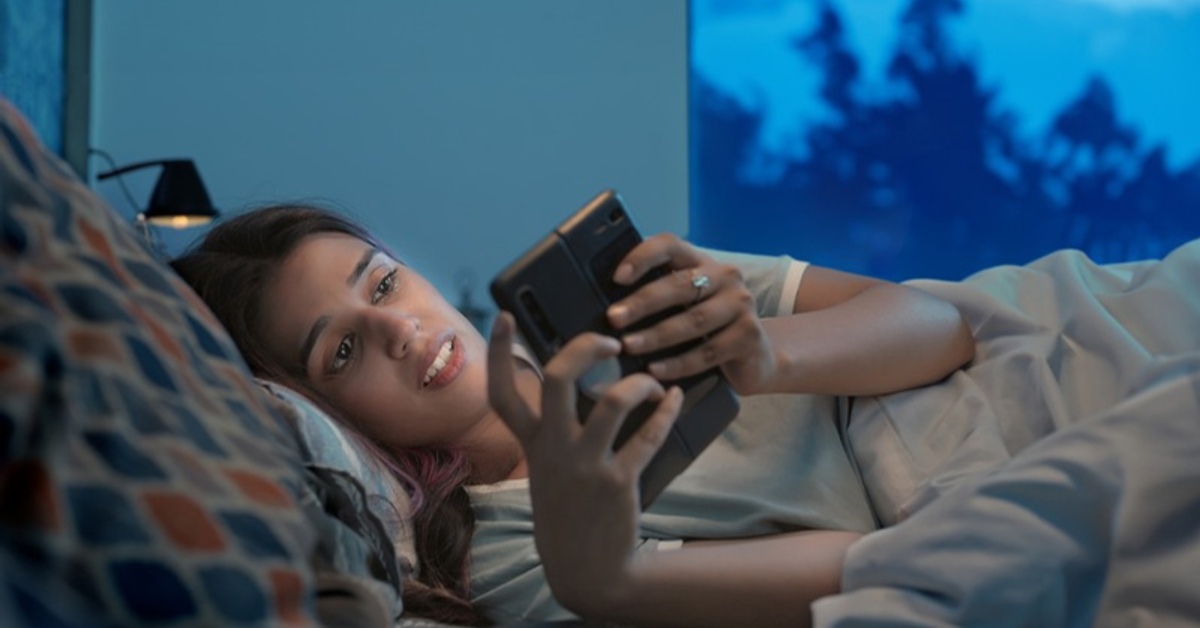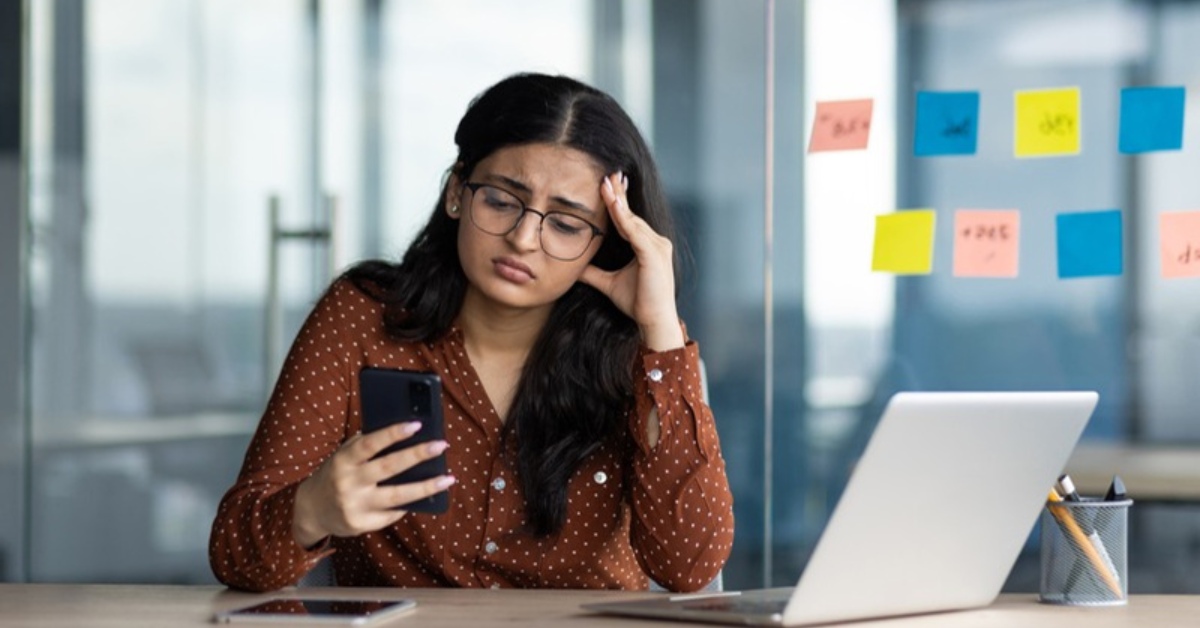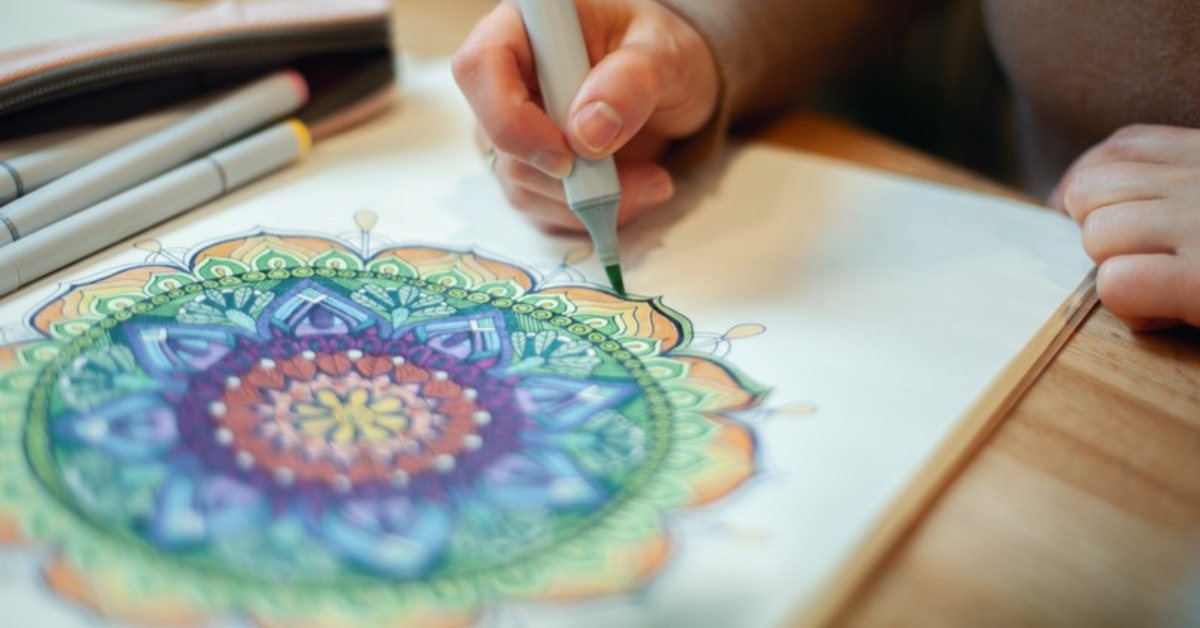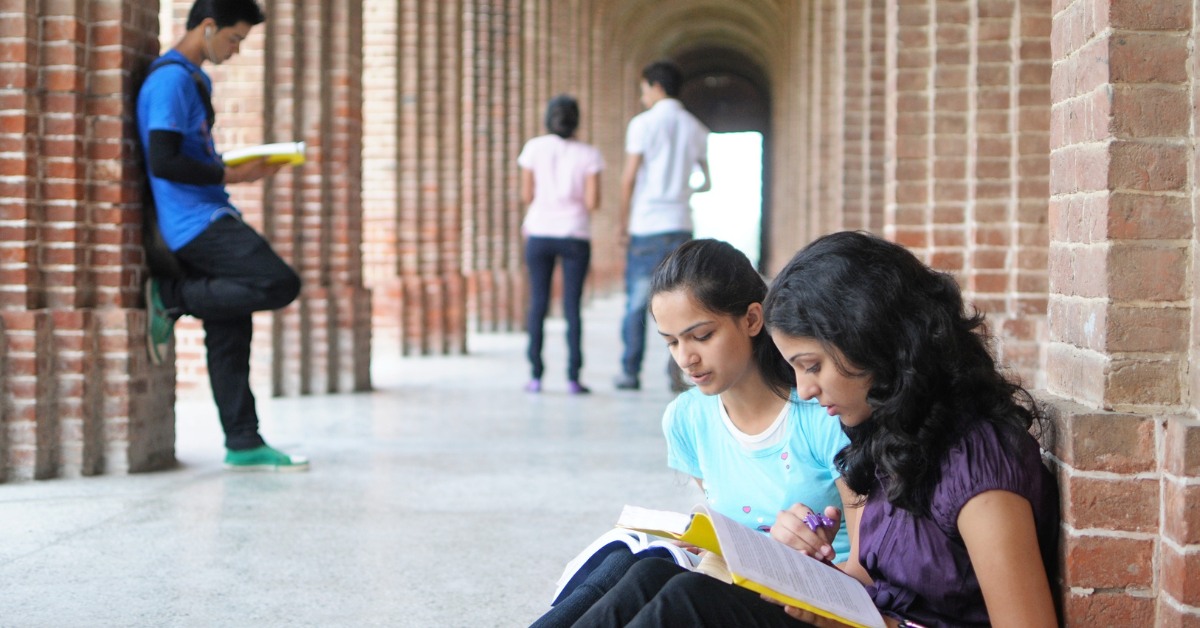How Young People Can Manage War Anxiety & Social Media Overwhelm, According to Experts
It often begins harmlessly — a quick scroll before bed, just to catch up. But before you know it, an hour slips by. You’re still glued to your screen, watching footage of bombed cities, tearful voices recounting loss, and breaking news banners that blur into each other.
Your heart races, sleep feels distant, and the weight of a world in crisis sits heavy on your chest. For many young adults, this is a ritual where the line between staying informed and being emotionally overwhelmed fades away.
And it’s not just anecdotal. A study by the World Health Organisation, conducted across 44 countries, found that 11% of adolescents show signs of problematic social media use — struggling to control how much time they spend online.
In an age where war, climate disasters, and humanitarian crises are streamed live onto our screens, that lack of regulation takes on a deeper significance. It’s not just about screen time anymore — it’s about the emotional toll of constant exposure.
 Constant exposure to distressing headlines can lead to digital fatigue, anxiety, and emotional burnout — a common effect of doom-scrolling. (Representative image courtesy Shutterstock)
Constant exposure to distressing headlines can lead to digital fatigue, anxiety, and emotional burnout — a common effect of doom-scrolling. (Representative image courtesy Shutterstock)
Mental health experts warn that this barrage of distressing content can chip away at our emotional resilience. Graphic images, harrowing videos, and an unrelenting flood of negative news can trigger intense stress, anxiety, and even panic. This pattern of compulsive content consumption, especially during global crises, is now commonly referred to as “doom-scrolling” — a term popularised by Harvard Health Publishing to describe the inability to stop scrolling through bad news, even when it causes distress.
The Better India spoke to mental health professionals who emphasised the importance of setting boundaries, filtering graphic content, and being intentional about media consumption — all vital steps to protect our well-being in an age of overwhelming information.
Let’s be honest — giving up social media entirely feels nearly impossible today. And it’s not just because we’re addicted to the apps. There’s a real emotional payoff — that little spark of joy when someone likes your post or replies instantly. It feels good, like biting into your favourite dessert or getting a warm hug. That feeling comes from dopamine — the brain’s “reward chemical” — and social media is designed to trigger it.
But it’s not just the likes and hearts. What keeps us scrolling is also the uncertainty — what will show up next? Will someone respond? Did you miss something important? According to mental wellness coach Kiara Jain, this unpredictability is what makes social platforms so addictive, especially during times of crisis. “FOMO — the Fear of Missing Out — is already very real.
 What starts as a quick bedtime scroll can easily turn into hours of anxious doom-scrolling, affecting sleep and peace of mind.
What starts as a quick bedtime scroll can easily turn into hours of anxious doom-scrolling, affecting sleep and peace of mind.
But when something big is unfolding, like a war or natural disaster, that fear becomes even stronger. People keep refreshing their feeds just to stay updated, even if it’s affecting their peace of mind.”
And here’s the catch: while we chase that dopamine high, we’re also being hit by something else — cortisol, the body’s stress hormone. Psychology expert Rasshi Gurnani, who works closely with young adults and celebrities, explains, “In moments of distress, constant exposure to graphic content triggers the body’s stress response. When we see traumatic images again and again, our cortisol levels stay high — and that can lead to anxiety, poor sleep, and even trouble focusing.”
It’s a confusing mix: feel-good hits from notifications and real distress from what we’re seeing. But once we understand what’s happening in our minds and bodies, we can start taking small steps to manage how much we consume — and how we feel about it.
‘Protect your mind as you would protect an open wound’
You could be sipping coffee on your balcony one moment, and the next, be staring at a heartbreaking reel from a war zone. The distance between ‘there’ and ‘here’ has vanished. Each scroll can bring a wave of grief, fear, or helplessness — emotions that quietly pile up. It’s no longer just news; it’s personal. That’s why acknowledging the emotional toll of this constant digital immersion isn’t just important — it’s urgent.
Mehezabin Dordi, a clinical psychologist based out of Mumbai with an experience of over seven years, shares that in recent years, there has been a surge in themes of conversations around ‘social media and news-induced stress’ in therapy sessions.
She further elaborates, “During the time of events like war outbreaks and political unrest, the intensity of damage and the speed of updates often make people feel overwhelmed, scared and paranoid. And for the younger population, where the news sources are social media platforms, it becomes all the way more difficult to disengage, leading to added frustration. In absolute psychological terms, because of such practices, I come across people with increased generalised anxiety issues, panic symptoms and emotional dysregulation.”
 Constant exposure to distressing news on social media can lead to digital fatigue, anxiety, and emotional burnout — especially among young adults.
Constant exposure to distressing news on social media can lead to digital fatigue, anxiety, and emotional burnout — especially among young adults.
She explains that these visible symptoms escalated during COVID-19, but the ongoing geopolitical situations have only heightened the stress levels. “Algorithms push for clickbaits, which often includes emotionally triggering content. Thus, trapping people in the vicious cycle of uninterrupted scrolling.”
To break free from this circle, it becomes necessary for young people to understand what type of media content can quietly chip away at their mental well-being. Mehezabin helped us broadly categorise three themes — war and violence, natural disasters, and political polarisation, which introduce vicarious trauma response in young people. She also mentioned that some people may also undergo post-traumatic stress-like symptoms when subjected to unfiltered content.
“Protect your mind as you would protect your open wound’ is what I tell adolescents and young adults. The way you would protect your injured leg is the way you should be protecting your mental wellness. It is imperative to understand that staying aware does not require you to absorb everything! The foremost thing, in such situations, is to validate your emotions and then set defined boundaries in terms of your news intake. One must rely on verified sources,” she adds.
On a clinical level, Mehezabin adds, “One can use certain emotional regulation techniques like grounding and breathing exercises, take up activities on mindfulness apps like HeadSpace, or journal one’s emotions as it helps externalise what one is going through from within. Psychologists often use Cognitive Behavioural Therapy, Somatic Therapy and Trauma-Informed Care to help people cope.”
But what do these techniques actually look like in real life?
Let’s say you’re doom-scrolling, your heart starts racing, and your chest feels tight. You can try this simple grounding exercise — it’s called the 5-4-3-2-1 technique:
- 5 things you can see around you
- 4 things you can touch (like your clothes, the chair you’re on)
- 3 things you can hear
- 2 things you can smell
- 1 thing you can taste
This brings your mind back to the present — away from the spiral, and into something solid and real.
 Simple breathing techniques can help calm the nervous system — a powerful tool to manage anxiety and feel grounded.
Simple breathing techniques can help calm the nervous system — a powerful tool to manage anxiety and feel grounded.
Breathing exercises also help calm your nervous system. One easy method is box breathing — inhale for 4 seconds, hold for 4, exhale for 4, hold for 4… and repeat. Just a minute or two can signal to your brain that you’re safe, even if things outside feel uncertain.
Therapy can take this further — especially during times of high stress. For example:
- Cognitive Behavioural Therapy (CBT) helps unpack the thoughts behind your emotional reactions — “I need to stay constantly updated” or “If I miss something, it means I don’t care” — and gently shift them toward healthier patterns.
- Somatic Therapy focuses on the body’s response to stress and trauma. If you’ve ever felt shaky or frozen after seeing a disturbing post, somatic techniques can help your body release that tension.
- Trauma-Informed Therapy means your therapist works with care, not force — focusing on safety, trust, and empowerment. It’s especially helpful if you’ve felt overwhelmed for a long time.
And if you’re wondering where to start — you don’t have to look far. There are platforms across India that make support more accessible:
- iCall – a free and confidential helpline by TISS
- The Mind Clan – a directory of inclusive, LGBTQIA+ affirmative therapists
- MindPeers and YourDOST – offer therapy sessions online
- BetterLYF – for quick access to trained counsellors via phone or chat
You don’t need to wait for a crisis to get support. Feeling overwhelmed is reason enough. Start small — with a breath, a pause, a journal entry. You’re not alone in this.
You’re not alone: how to build a circle of support in stressful times
Coping on your own is important — but healing really happens when support is shared. In overwhelming moments, just knowing that someone sees you can make all the difference. That’s why building a support system — whether it’s with friends, family, or your online community — is so powerful.
When emotions run high, being kind, patient, and present with one another matters more than ever. Sometimes, the people around us are quietly struggling too, even if they seem okay on the surface. A gentle check-in, a listening ear, or just creating space to rest and breathe can help more than we realise.
Here are a few small, simple things you can do — for yourself and for those around you — to protect your peace and create a more supportive space.
In a world that constantly demands our attention, it’s easy to feel overwhelmed by the flood of information we consume every day. Kiara Jain recommends taking a step back with simple activities like Mandala art or reading a physical book. These practices might seem small, but they can be incredibly powerful in helping you reset.
 Practising Mandala art can help shift focus from digital noise to mindful calm — giving your brain a much-needed break. (Representative image courtesy Shutterstock)
Practising Mandala art can help shift focus from digital noise to mindful calm — giving your brain a much-needed break. (Representative image courtesy Shutterstock)
When you immerse yourself in creating or reading, you’re giving your mind a chance to shift from the constant stimulation of screens to something more calming. It’s a way to reconnect with the present moment, away from the endless scroll. These mindful breaks reduce mental clutter, help you relax, and even improve focus — so when you return to your digital world, you’re more balanced and less stressed.
Rasshi Gurnani suggests creating spaces where young people can talk openly with others who truly understand what they’re going through. Peer-led mental health groups give students a safe space to share how current events and the constant flow of news are affecting them. These groups also provide a platform to talk about practical strategies for coping with digital overload and emotional burnout.
 Creating peer-led safe spaces allows young people to speak openly about media stress, build empathy, and support one another. (Representative image courtesy Shutterstock)
Creating peer-led safe spaces allows young people to speak openly about media stress, build empathy, and support one another. (Representative image courtesy Shutterstock)
When was the last time you really opened up about how all the news online has been making you feel? Having someone listen and relate can be incredibly comforting and normalise the struggles many face. By encouraging these conversations, these groups help lift the weight off your shoulders and make dealing with stress a little easier.
3. Creating a holistic ecosystem — Mehezabin’s guidelines to parents, educators, and institutes
Mehezabin Dordi stresses that protecting young people’s mental health in the digital age is a shared responsibility. Coping is not just the responsibility of the individual but of the whole ecosystem around them—parents, educators, and institutions.
For parents, it’s important to understand the massive role media plays in their children’s lives. Creating a non-judgmental space where kids feel comfortable sharing their digital experiences can make a world of difference. Have you ever thought about how much time your kids or loved ones spend online, and how it might be affecting them?
Educators, on the other hand, can help by teaching students how to understand what they see online. When we know how algorithms work or how news is framed, we start to see the bigger picture and develop critical thinking skills. This helps protect young minds from simply taking everything at face value.
Mehezabin also points out that institutions must integrate mental health support into their daily culture on a larger scale. Schools and colleges need to encourage open conversations about mental well-being and ensure that students have access to the help they need, whether it’s for anxiety, stress, or the emotional challenges brought on by too much media exposure.
Edited by Leila Badyari
News